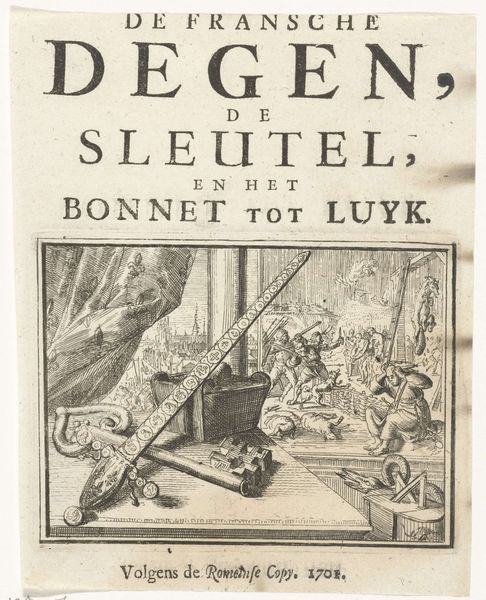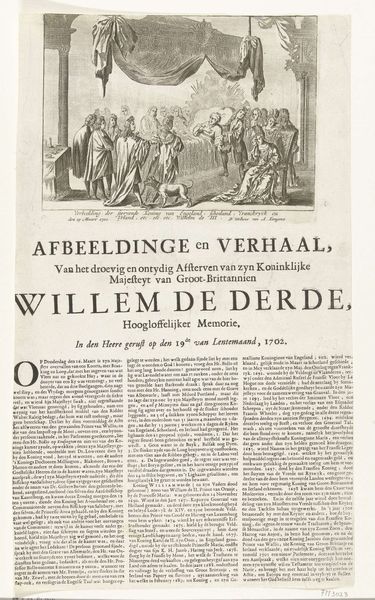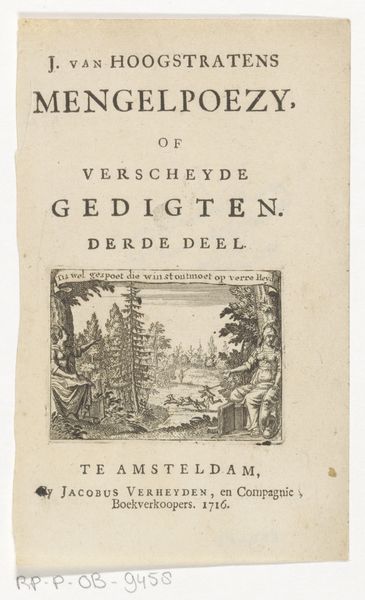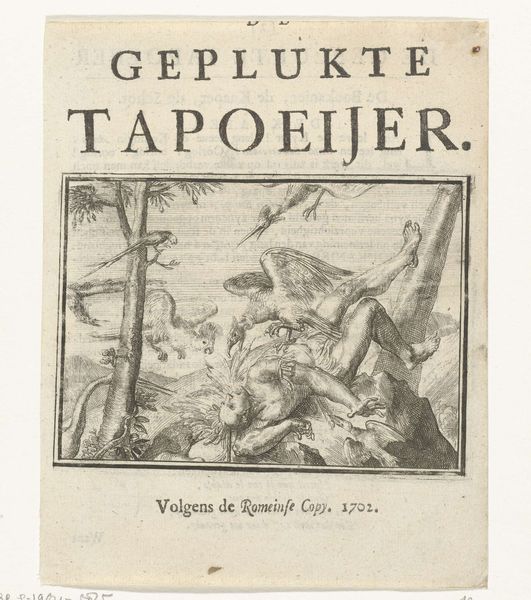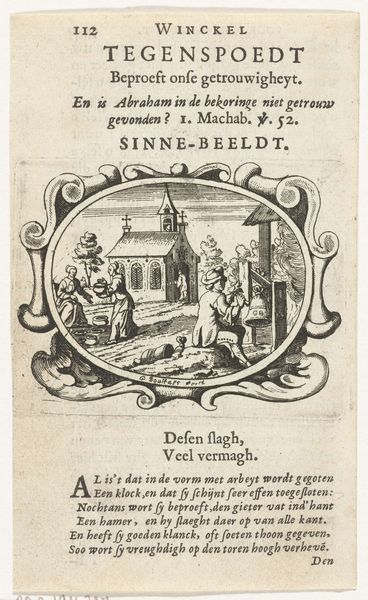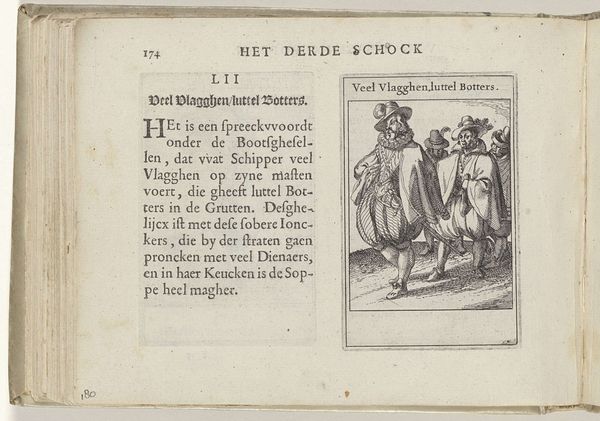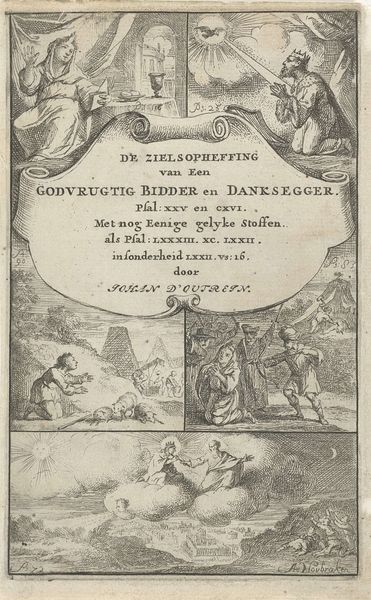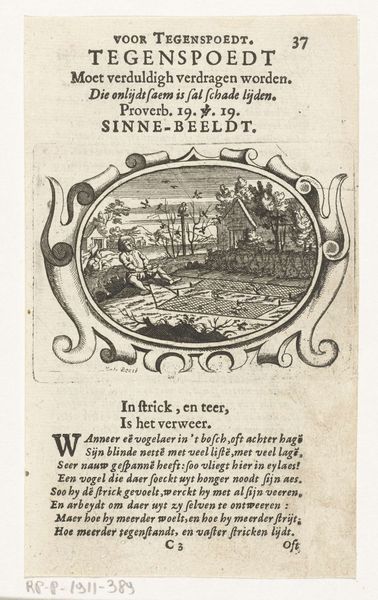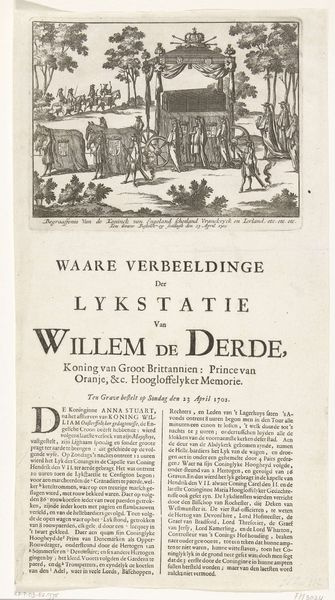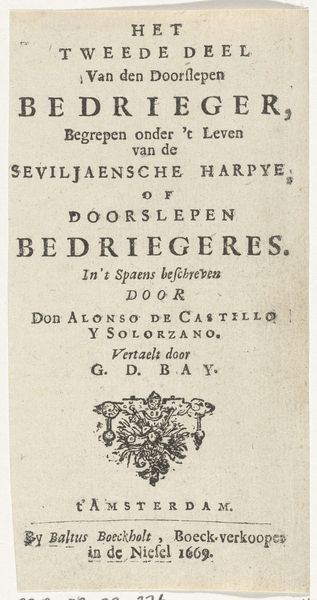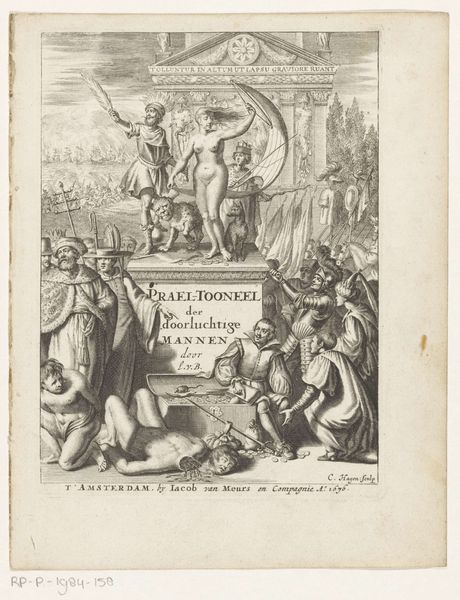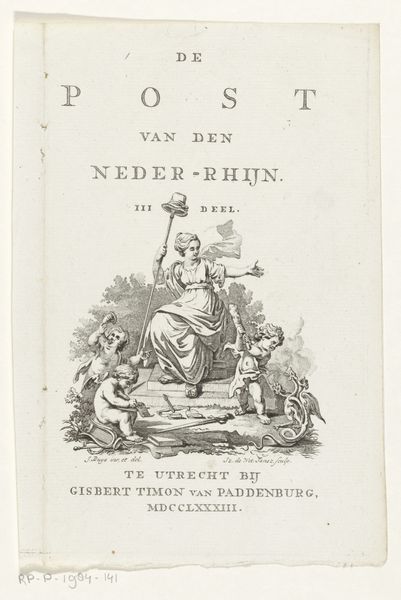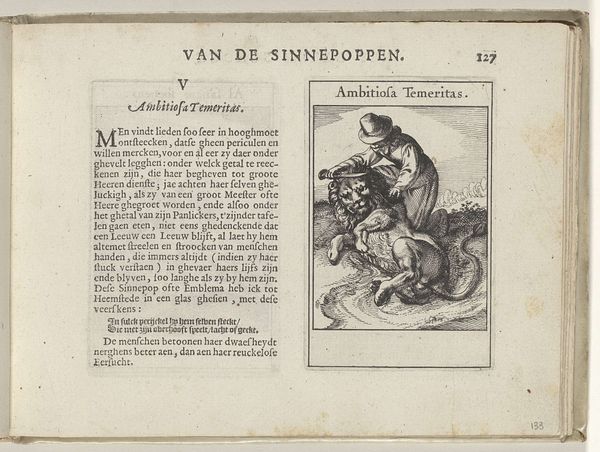
print, etching, engraving
#
aged paper
#
baroque
#
dutch-golden-age
# print
#
etching
#
old engraving style
#
hand drawn type
#
personal sketchbook
#
pen-ink sketch
#
ink colored
#
pen and pencil
#
pen work
#
sketchbook drawing
#
history-painting
#
sketchbook art
#
engraving
Dimensions: height 175 mm, width 140 mm
Copyright: Rijks Museum: Open Domain
Curator: This etching, dating back to 1702, serves as the title page for the pamphlet *De Gefopte Bedrieger,* or *The Duped Deceiver.* It’s currently held in the Rijksmuseum collection. Editor: It's immediately striking – the intricate line work, the implied social commentary. It's got this immediate rawness, as if ripped from a larger context. What story do you suppose it means to convey? Curator: Understanding the social milieu of the Dutch Golden Age is key. The print likely critiqued societal figures and power structures, reflecting contemporary anxieties about corruption and moral decline. Romeyn de Hooghe, the artist, often engaged with these themes. The central figure certainly seems to represent someone in authority being swindled. Editor: Absolutely, there’s a blatant disregard here, in this scene of plunder that unfolds with such deliberate arrangement. Tell me more about De Hooghe’s materials and technique. The textures are especially interesting given the relatively small scale of an etching. Curator: De Hooghe masterfully used etching techniques to create this textured surface. The use of line and hatching allows him to vary tonal range, but this wasn’t solely an artistic choice. Consider the practicality. Printed pamphlets had to be rapidly produced for mass distribution. These materials and their efficient deployment played a direct role in political discourse at the time. Editor: I see the historical significance here. De Hooghe cleverly marries artistry with propaganda, underscoring class issues and anxieties about social mobility during that period. Look how the composition and materiality coalesce into social critique! It goes beyond just surface aesthetics, embedding power dynamics directly into the means of its production. Curator: Yes, viewing art as a product deeply rooted in social systems—considering power structures related to gender, race, and class is central. Here, the exploitation becomes glaring under the surface. The image is less a representation, and more an artifact that demonstrates these intricate hierarchies and how they were reinforced. Editor: Examining this title page makes me think about how artists engaged directly with social change. The image's value stems not only from the aesthetic decisions that we might read into it but, perhaps even more importantly, how such methods actively molded cultural norms and impacted our understanding of social realities. Curator: Precisely, this lens offers such enriching views of past sociopolitical complexities. Thank you, it's helped solidify for me what I always thought about this image.
Comments
No comments
Be the first to comment and join the conversation on the ultimate creative platform.
